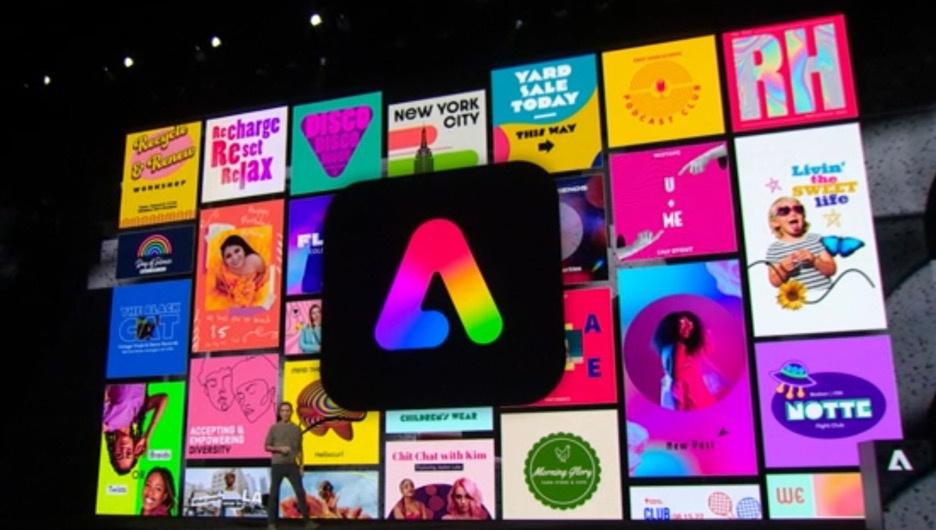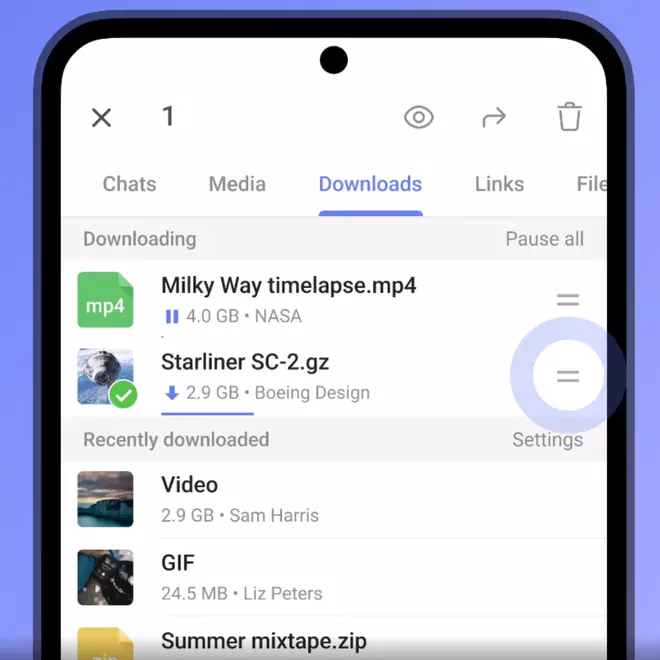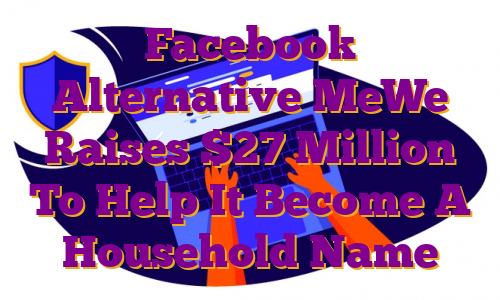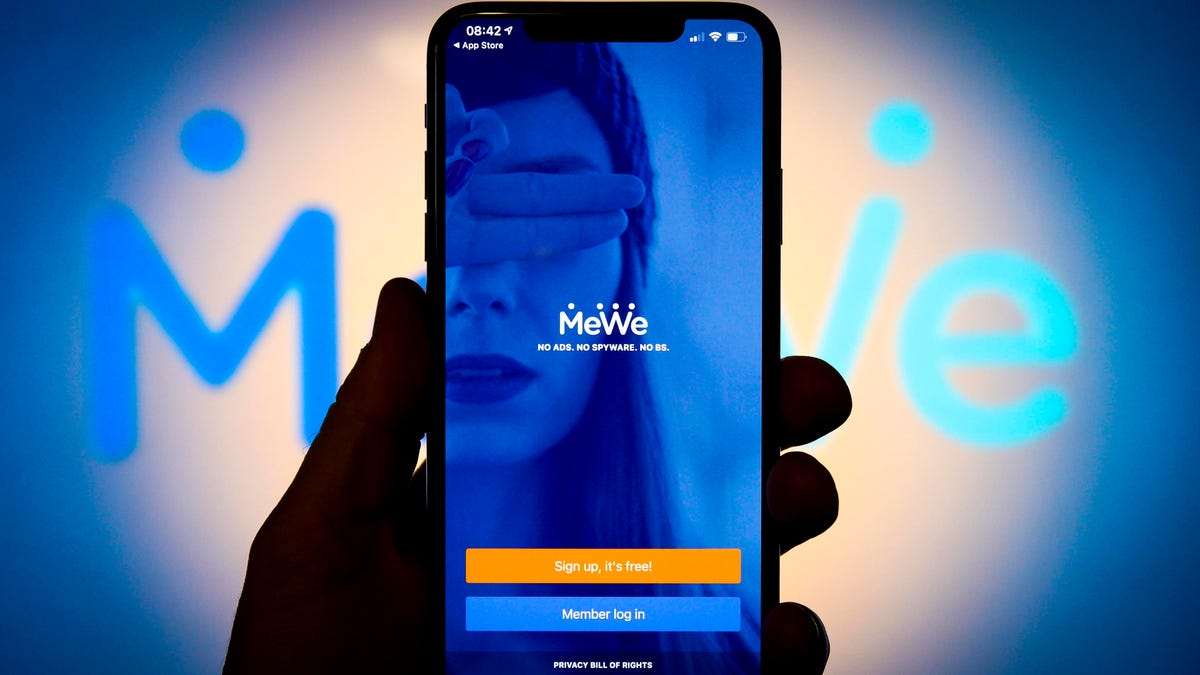AdobeAdobe
There are many tools for content creation, whether photos, videos, or materials for marketing or sales purposes. Adobe Express is how the company hopes to satisfy the voracious appetite of users needing quick content creation tools accessible from virtually any device. Adobe launched Express late last year to deliver on the promise of delivering the best of Adobe for everyone. The way Adobe is updating Express is through a constantly rolling series of updates with hundreds of updates over the last ten months. At this year’s Adobe MAX, there is now a tiny glimpse of what Adobe hopes to accomplish with Adobe Express with almost a year of developments. Adobe is merely scratching the surface of what the company hopes to achieve with Express, which is astonishing when you consider how much it can do for users.
New capabilities
Adobe Express already provides creators with over 22,000 licensed Adobe fonts and 193 million assets, including royalty-free stock images and templates. Adobe Express is the company’s platform for mixed media creation, with many of its cloud applications’ best features consolidated into a single editing experience. One of the newest features of Adobe Express is the ability to add connectivity to Adobe Creative Cloud applications which use the new Libraries feature for collaboration. Adobe hopes to build on this feature by enabling real-time collaboration within different documents and files so that people can more quickly cooperate. Adobe Express also uses AI to deliver template recommendations based on the project already being worked on, which leverages Adobe’s Sensei predictive AI. The use of AI in creative mediums will only increase, especially with Adobe giving more users access to such features through Express.
The new content scheduler allows a user to schedule and publish social media content across multiple platforms in an elegant and visually simplified user experience and is free to use but metered for premium use. Many quick actions also represent some of the most common tasks the average person might need on a typical day. These features span image and video editing like resizing, converting to GIF, converting to MP4, trimming a video, resizing a video, merging videos, removing a background, cropping an image, generating a QR code, or converting files to or from PDFs. In each of these tasks, Adobe leverages different Adobe products to accelerate Express’ quick actions, like Adobe Acrobat for PDFs, Adobe Premiere for video editing, and Adobe Photoshop for image editing. This is how you can see that Adobe is bringing the best of Adobe’s different purpose-built products to one place for everyone to access. Adobe’s capabilities with Express get improved with generative AI capabilities which can help generate unique fonts, images, and backgrounds, just to start. Adobe says these features are merely the tip of the iceberg of what the company hopes to accomplish with Express as it aims to increase generative AI capabilities, live co-editing features, and connectivity between its apps and Express.
New growth and partnerships
While Adobe announced many new partnerships at Adobe MAX, the company also talked about some of the momenta it has already built with educators and students, with more than 43 million K-12 students and teachers using Adobe Express for Education. One of the ways that Adobe has grown Express for Education so much is to support Adobe Express add-ons for Google Classroom, Clever, and Classlink, making Adobe Express an integral part of the day-to-day classroom software. Adobe is also working with educational platforms like Chegg to make Adobe Express premium available to eight million online students to help teach students how to be creative and digitally literate. I took my access to Adobe products in school for granted, but now I see how beneficial my experience with these tools has become in my career and how access can help others, too.
Adobe Express is also partnering with Wix, one of the world’s leading website builders and hosting platforms. Wix will integrate Adobe Express features into Wix Media Manager for creators and businesses to manage and edit the content on their pages more easily without having to leave the site. In addition to Wix, Adobe partnered with Meta on an Express Your Brand initiative, which seeks to teach small business owners how to use Adobe Express with free training sessions. That said, Adobe does offer Express for free and does have a bunch of free templates and training sessions, so these are likely more targeted toward small business owners using Facebook and Instagram.
Business model
Adobe Express is built on a freemium model, giving it away for free but leaving more premium features behind a $9.99 subscription. This subscription gives access to more fonts, more templates and removes caps on features like scheduled posts. However, Adobe Express is free to all students and teachers through Adobe Express for Education. I believe it is an excellent way for Adobe to expose the power of its applications to a new generation of users. With Adobe Express being available on mobile devices and web browsers, it is as accessible as it ever has been with an equally accessible price. Adobe also has a free version of Express for nonprofits through Express for Nonprofits, with a cap of up to 10 users having free access to Adobe Express premium.
Final thoughts
I think Adobe is doing something inspiring with Adobe Express, making its most popular features within its cloud apps accessible to virtually anyone, anywhere, on any device. I can also already see how Express can be used with Adobe’s creative cloud applications to improve collaboration and ease of posting to social media platforms. Sure, there are more complex tools for professionals, but tons of people also need a more straightforward user interface and easy access to Express’s tools today. I believe that Adobe’s ultimate goal is to create as large of a user base as possible with Adobe Express, which then feeds into more new users wanting to have access to its more powerful applications like Premiere Pro and Photoshop to get more granular control of the content, while still being able to use Express as the conduit for sharing and collaborating across those apps and with colleagues, friends, and family.
Note: Moor Insights & Strategy writers and editors may have contributed to this article.
Moor Insights & Strategy, like all research and tech industry analyst firms, provides or has provided paid services to technology companies. These services include research, analysis, advising, consulting, benchmarking, acquisition matchmaking, and speaking sponsorships. The company has had or currently has paid business relationships with 8×8, Accenture, A10 Networks, Advanced Micro Devices, Amazon, Amazon Web Services, Ambient Scientific, Anuta Networks, Applied Brain Research, Applied Micro, Apstra, Arm, Aruba Networks (now HPE), Atom Computing, AT&T, Aura, Automation Anywhere, AWS, A-10 Strategies, Bitfusion, Blaize, Box, Broadcom, C3.AI, Calix, Campfire, Cisco Systems, Clear Software, Cloudera, Clumio, Cognitive Systems, CompuCom, Cradlepoint, CyberArk, Dell, Dell EMC, Dell Technologies, Diablo Technologies, Dialogue Group, Digital Optics, Dreamium Labs, D-Wave, Echelon, Ericsson, Extreme Networks, Five9, Flex, Foundries.io, Foxconn, Frame (now VMware), Fujitsu, Gen Z Consortium, Glue Networks, GlobalFoundries, Revolve (now Google), Google Cloud, Graphcore, Groq, Hiregenics, Hotwire Global, HP Inc., Hewlett Packard Enterprise, Honeywell, Huawei Technologies, IBM, Infinidat, Infosys, Inseego, IonQ, IonVR, Inseego, Infosys, Infiot, Intel, Interdigital, Jabil Circuit, Keysight, Konica Minolta, Lattice Semiconductor, Lenovo, Linux Foundation, Lightbits Labs, LogicMonitor, Luminar, MapBox, Marvell Technology, Mavenir, Marseille Inc, Mayfair Equity, Meraki (Cisco), Merck KGaA, Mesophere, Micron Technology, Microsoft, MiTEL, Mojo Networks, MongoDB, MulteFire Alliance, National Instruments, Neat, NetApp, Nightwatch, NOKIA (Alcatel-Lucent), Nortek, Novumind, NVIDIA, Nutanix, Nuvia (now Qualcomm), onsemi, ONUG, OpenStack Foundation, Oracle, Palo Alto Networks, Panasas, Peraso, Pexip, Pixelworks, Plume Design, PlusAI, Poly (formerly Plantronics), Portworx, Pure Storage, Qualcomm, Quantinuum, Rackspace, Rambus, Rayvolt E-Bikes, Red Hat, Renesas, Residio, Samsung Electronics, Samsung Semi, SAP, SAS, Scale Computing, Schneider Electric, SiFive, Silver Peak (now Aruba-HPE), SkyWorks, SONY Optical Storage, Splunk, Springpath (now Cisco), Spirent, Splunk, Sprint (now T-Mobile), Stratus Technologies, Symantec, Synaptics, Syniverse, Synopsys, Tanium, Telesign,TE Connectivity, TensTorrent, Tobii Technology, Teradata,T-Mobile, Treasure Data, Twitter, Unity Technologies, UiPath, Verizon Communications, VAST Data, Ventana Micro Systems, Vidyo, VMware, Wave Computing, Wellsmith, Xilinx, Zayo, Zebra, Zededa, Zendesk, Zoho, Zoom, and Zscaler. Moor Insights & Strategy founder, CEO, and Chief Analyst Patrick Moorhead is an investor in dMY Technology Group Inc. VI, Dreamium Labs, Groq, Luminar Technologies, MemryX, and Movandi.
Moor Insights & Strategy founder, CEO, and Chief Analyst Patrick Moorhead is an investor in dMY Technology Group Inc. VI, Dreamium Labs, Groq, Luminar Technologies, MemryX, and Movand
.











 Dear Reader,
Dear Reader,